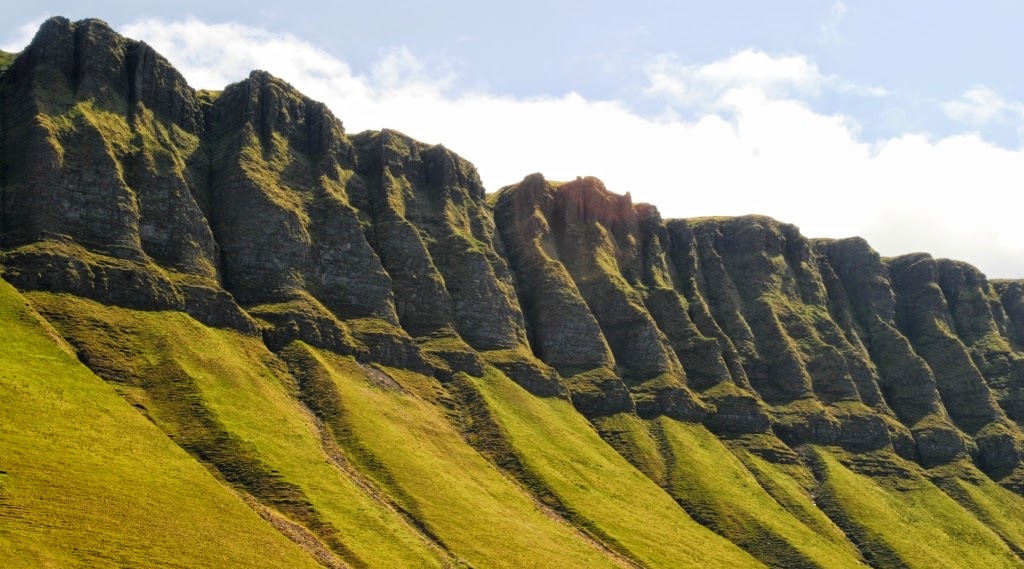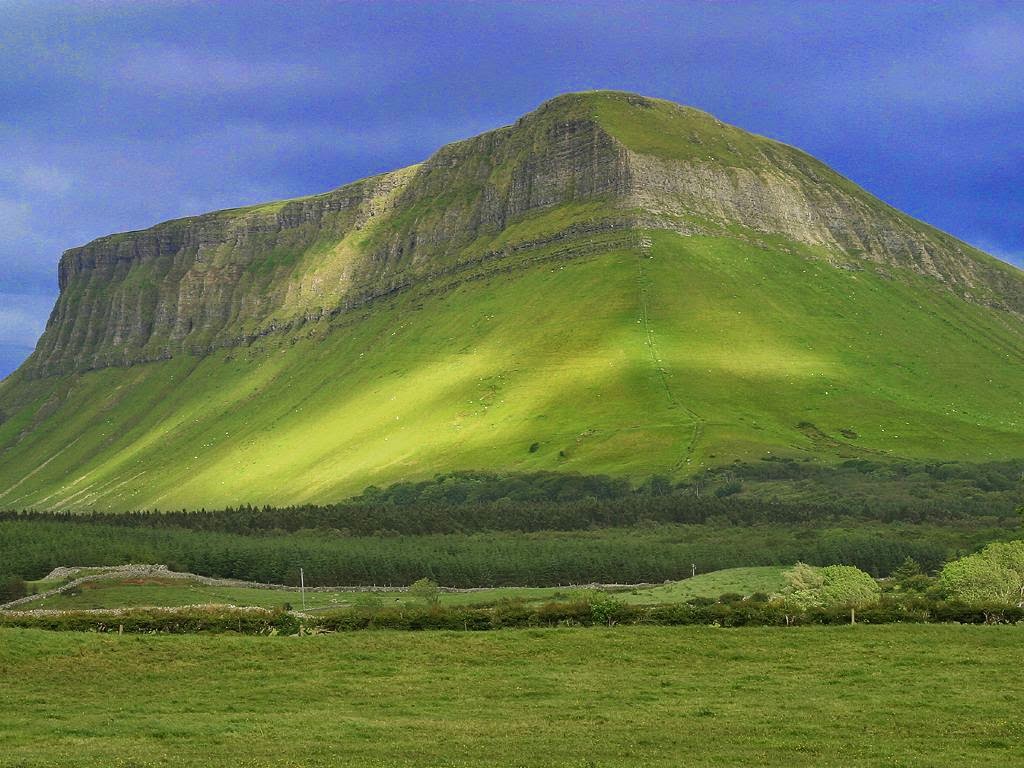Ben Mount Benbulbin is located in
County Sligo, in the extreme north-west of Ireland, 10 KM north of the town of
Sligo. The mountain Benbulbin is 527 meters and an entire county of Sligo and
its symbols. Benbulbin is a protected site, designated as a County Geological
Site by Sligo County Council. According to Irish legend, lived on this mountain
monstrous boar of Benbulbin, Diarmuid was killed and buried in a hill Lech
MUIKAM, near Dramkliffa at the foot of Benbulbin, according to his will, buried
the great Irish poet WB Yeats. Its present form the mountain was during the
last glacial period. Initially, it had a high “hump” that was cut creeping
glacier.
Benbulbin almost entirely
composed of limestone rocks. The name Benbulbin is also echoed in the name of
the king Conall Gulban, a son of Niall of the Nine Hostages who was associated
with the mountain; though, whether he was named after the mountain or the
mountain after him is not clear. Benbulbin was shaped during the ice age, when
Ireland was under glaciers, actually it was a large plateau and with the
passage of time it converts into distinct formation. Benbulbin Mountain is
composed of limestone on top of mudstones and these rocks formed approximately
320 million years ago in a shallow sea. Fossils exist throughout the layers of
the mountains. All layers have many fossilized sea shells. The shale layer also
holds some corals.
Benbulbin is an established
dangerous climbing destination because the side bears the brunt of the high
winds and storms that come in from the Atlantic Ocean. However if you climb
from south side of mountain which is considered easy side since that side
slopes very gently. And when climbers reached the summit, they’re rewarded with
a magnificent view over the coastal plain of north Co. Sligo and the Atlantic
Ocean. Therefore; Benbulbin hosts a unique and rare variety of plants,
including particular organisms found nowhere else in Ireland. Several are
Arctic–alpine plants, which grows in cooler temperatures than is normal. Some
plants were deposited when the glaciers created Benbulbin i.e wild hares and
foxes inhabit Benbulbin. In 2012, some researchers exposed that the Fringed
Sandwort had survived the Ice Age and is possibly 100,000 years old.













No comments:
Post a Comment